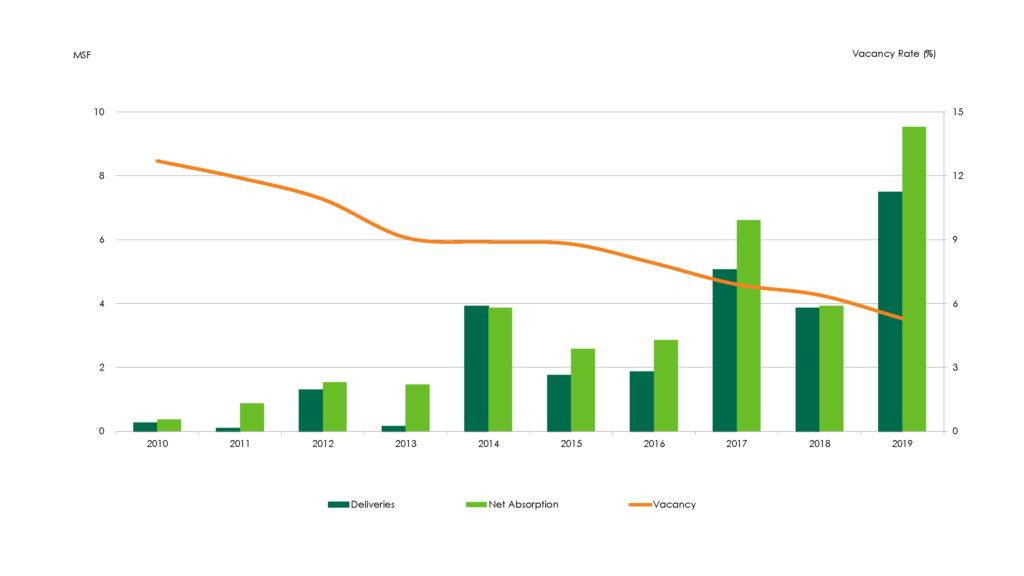Judging by every metric, 2019 finished as the most prolific year for the Baltimore industrial real estate market with more than 9.5 million square feet of space absorbed — a rise of 44 percent over the previous record, according to a recent report issued by CBRE. This included more than 3.4 million square feet absorbed in the fourth quarter alone. The previous record in the local market was 6.6 million square feet of space absorbed in 2017.
At the close of the year, the Baltimore City vacancy rate in the warehouse/industrial market stood at 3.4 percent and the overall Baltimore market finished at 5.3 percent.
“Demand is still outpacing supply and the development
community has been extremely responsible with regard to the amount of space
that is being constructed on a speculative basis,” explained Matt Laraway,
Partner, Chesapeake Real Estate Group. “Our region remains popular for
logistics requirements to serve the heavily-populated Mid-Atlantic, but labor
tells the real story. Other states have great locations but cannot compete with
Maryland’s highly-skilled employee base, which continues to set us apart.”
More than 7.4 million square feet of space was delivered
locally in the past year and approximately 4.2 million square feet of space
remains under construction at the present time. The report states that
“construction activity continues to reflect immense confidence in the local
market,” and “strong tenant demand across all size ranges driving vacancies to
all-time lows … have accelerated the introduction of speculative assets to the
market with success.”
Asking rental rates rose 2 percent in the fourth quarter to
$7.10 per square foot for a triple net lease, with warehouse rates slightly
rising to $5.93 per square foot.
“We believe the Baltimore and Northern Virginia
logistics real estate market will experience another year of robust growth, as
businesses in various industries seek high-quality locations,” added Danielle
Schline, Vice President, Market Officer, Prologis. “Consumption remains strong,
both as a driver of broader economic growth and as a structural driver of
demand, and the fundamentals for an extended runway is favorable based on our
above-average demographics.”

